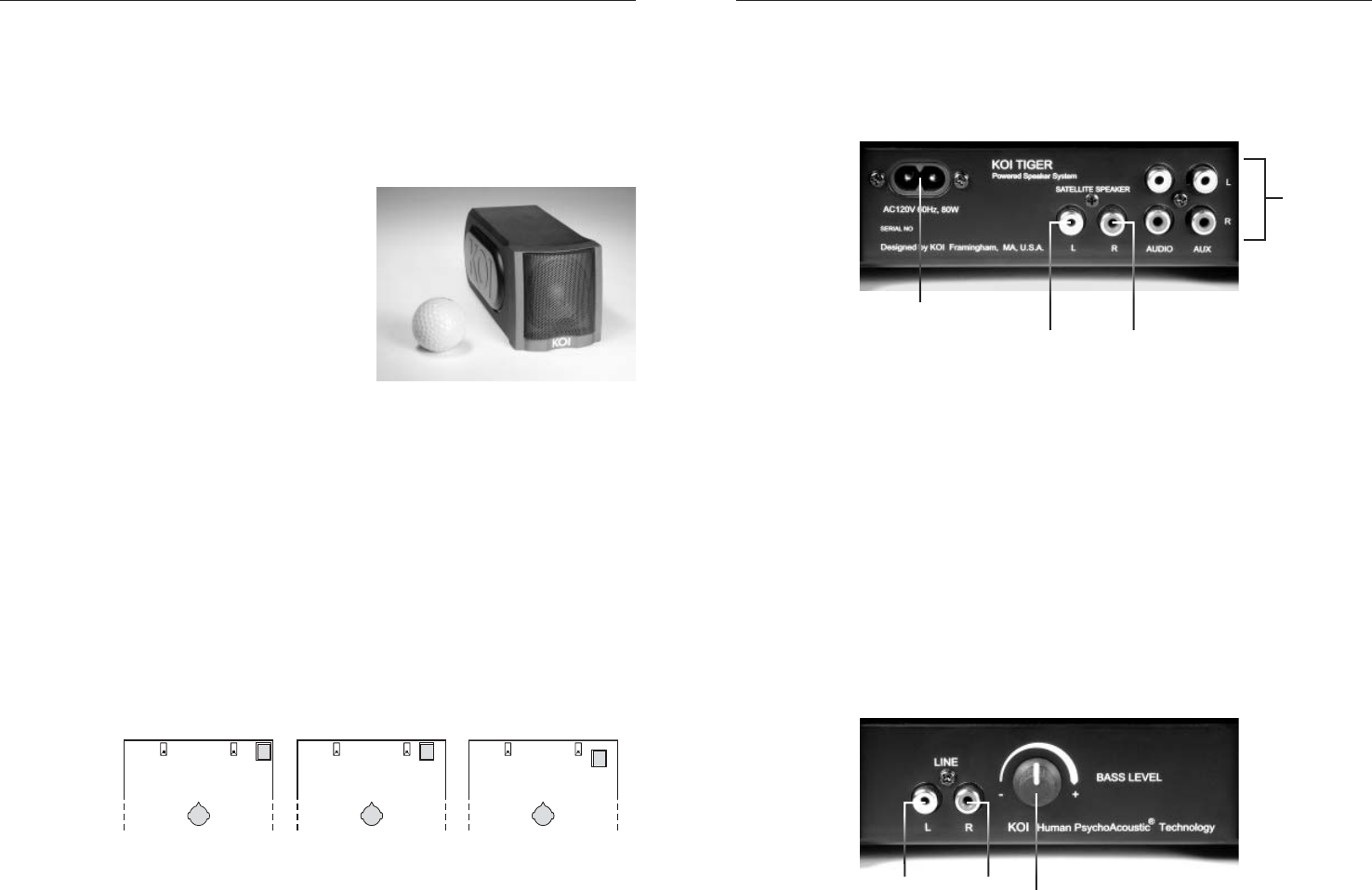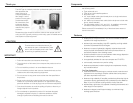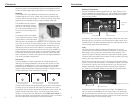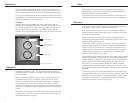
4
5
There are three sets of stereo inputs on the Tiger. The Line input on
the front panel and the Aux input on the rear panel of the subwoofer
are recommended for use with most consumer audio equipment. The
Audio input on the rear panel is better suited for pro audio equipment
with standard 0dBu (.775V) line-level output.
Perform all audio connections with the Tiger’s AC cord unplugged.
Satellite To Subwoofer
Use the fl at speaker cables supplied with your Tiger system to con-
nect the satellites to the subwoofer unit. These cables can be affi xed
to the wall using double-sided adhesive tape and painted to render
them virtually invisible.
Placement
The advanced acoustic design of the Tiger makes component place-
ment non-critical—any reasonable location of the satellites and sub-
woofer will yield superb stereo reproduction in most listening rooms.
Satellites
The compact KOI Tiger satellites can be placed in just about any
available space in your room. Ideally, they would be placed along a
common wall at the same height. For critical monitoring (close-fi eld)
applications, the satellites should be approximately at ear level.
The satellites can be placed on
shelves, on equipment racks, in
wall units, over mixing consoles,
etc. They can be placed as near
or far from room boundaries as
desired.
A mounting bracket is available
as an optional accessory. Please
contact KOI for more information.
Although the Tiger satellites are supplied in mirror-image pairs, there
is no “rule” as to which should be left and right. In critical monitoring
applications, you may notice subtle differences, depending on the
listening environment and source material. For example, facing the
passive radiators (covered by the grille on the side of the satellite) “in-
ward” toward each other may result in a more focused stereo image.
Conversely, facing the passive radiators “outward” toward the side
walls, may result in a wider, more spacious soundstage presentation.
You are encouraged to experiment.
Subwoofer
Like the satellites, the Tiger subwoofer can be placed within the
listening room with great fl exibility. As the acoustic output from the
subwoofer is nondirectional, it is not necessary to have it centered
between the two satellites. In fact, the two satellite-to-subwoofer
speaker cables supplied are intentionally different in length to accom-
modate placement of the subwoofer to one side.
The bass performance will be affected by the location of the subwoof-
er within your room, especially with regard to distances from room
boundaries. The closer the subwoofer is placed to a room corner, the
greater the perceived bass output. You should experiment with its
location—in conjunction with adjustment of the bass level control on
the front lower panel of the subwoofer (see photo at right)—to achieve
the most natural bass reproduction and overall balance.
Connections
To right satelliteTo left satellite
Subwoofer rear panel
Rear panel
inputs
AC power connector
If necessary, you can purchase longer speaker cables pre-wired with
RCA-type phono connectors at most electronics supply stores, such
as Radio Shack. Do not use shielded cables for this purpose as they
may adversely affect audio performance.
Input
The Tiger accommodates just about any audio source. You can
connect the Tiger to personal portable CD, MiniDisc, or tape players,
MP3 players, mini-component and portable stereo systems, com-
ponent CD and DVD players, televisions, personal computers, game
consoles, MIDI instruments and modules, mixing consoles, recording
devices, and many other sources.
NOTE: Some sources, such as mini-component and portable stereo
systems, have no line-level outputs—only speaker outputs. If you plan
to connect the Tiger to such a high-level source, you should use an
adapter (attenuator) designed to protect the input from overload. If
you need such an adapter, please contact KOI for more information.
Front panel input
Subwoofer front panel
Bass level control
Greatest room boundary
bass reinforcement
Partial room boundary
bass reinforcement
Least room boundary
bass reinforcement







